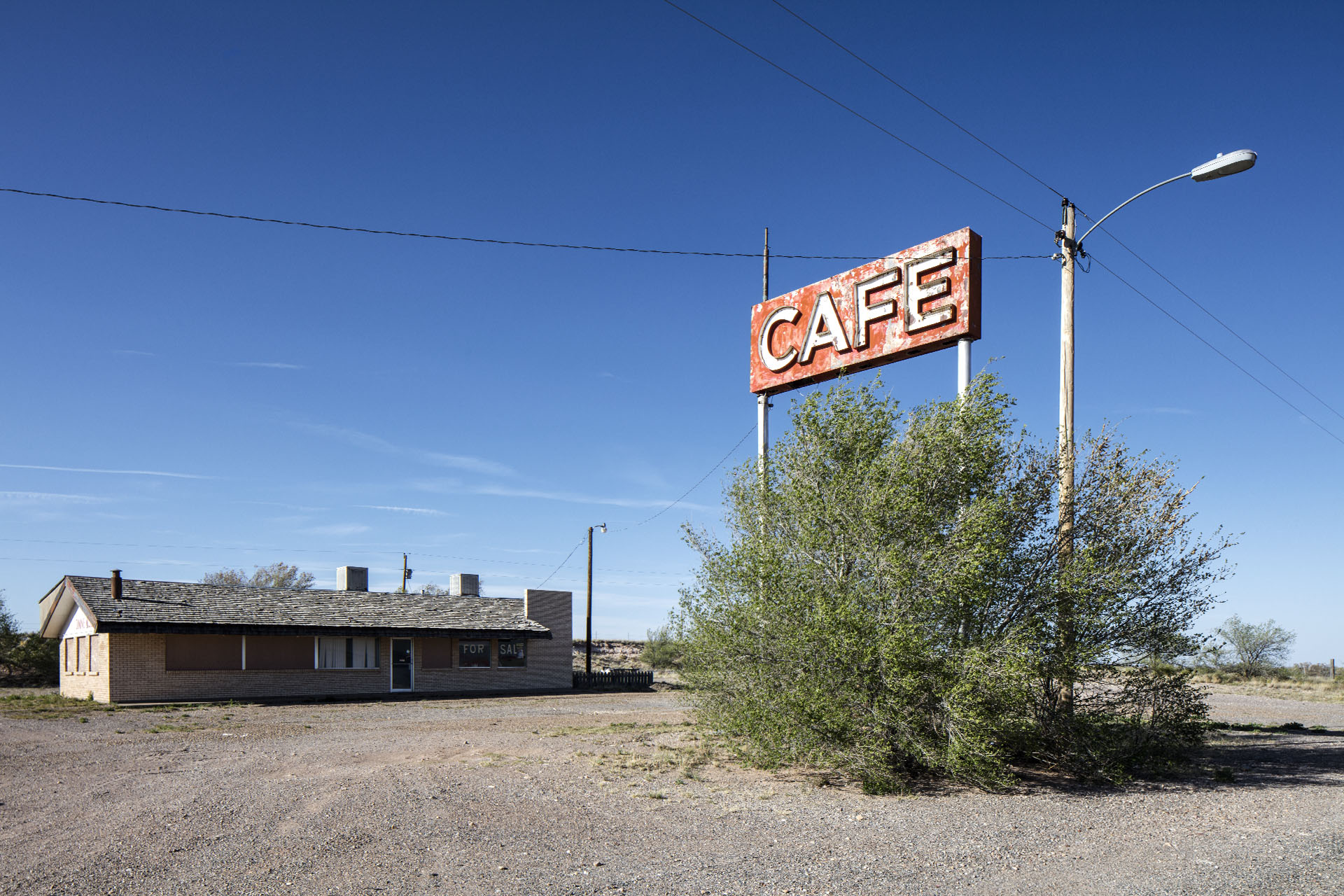Personal Thoughts on the Current Exhibition at the San Francisco Museum of Modern Art
by Brian Edwards
The San Francisco Museum of Modern Art is having an exhibition entitled Walker Evans that focuses on Evans’ interest in the vernacular. Running from September 30 to February 4, the show will include more than 300 prints of his work, a number of his paintings, postcards, and his personal scrapbook. [7] [9] Reading about this exhibition reminded me of how Walker Evans has influenced my own photographic work and perhaps even my view of the world.
I have often thought of the work of Walker Evans as a combination of social documentary and pre-topographic photography. He was one of the many Farm Service Administration (FSA) photographers that took scores of images documenting the Great Depression and influenced many of that same group of photographers. Stephen Shore has on numerous occasions cited Evans as an important influence on his own work; other photographers claiming similar influence include Robert Frank, Garry Winogrand, Diane Arbus, and Lee Friedlander. [10]
Walker Evans, Truck and Sign 1928-1930 [7] [9]
Another body of work that influenced some of my own has revolved around the notion of the vernacular landscape, which involves capturing the interaction between people and the landscape over time. One principal advocate of this point of view is the writing, photography, and painting of John Brinckeroff (J.B.) Jackson. [2] This movement departs from the modernist view of the landscape perhaps best represented by the work of Ansel Adams, but also departs from the romanticized view of landscapes represented by painters like John Constable, Thomas Gainsborough, and JMW Turner. [8] Adams’ vision of the landscape was diametric to the vernacular view, namely, his vision of the landscape involved representing the landscape in more romantic terms and for the most part reflected a pre-Anthropocene (before the climate and environment were influenced by humans) view of how a landscape image should look. Like the New Topographics movement of the 1970s, the vernacular landscape emphasizes that very interaction. [6]
John Constable, Mill at Gillingham, Dorset, 1825-1826 [4]
What distinguished Jackson’s work from many of the New Topographic photographers is the less formal approach to image-making. The formal, objective view of Bernd and Hilla Becher, for example, is clearly missing in Jackson’s images. [1] If anything, his images share more of what one would see in a collection of slides that just about any road traveler would take while on vacation, even though it’s very likely that subject matter would differ. The common thread is the lack of any attempt to romanticize the landscape.
J.B. Jackson, Collins, Hot Coffee [3]
A thread that runs through much of my own work is a sense of the vernacular, motivated in part by my interest in urban design, the economic viability of small towns, and rural landscapes. My use of tilt-shift lenses, on the other hand, reintroduces some of the formality and objectivity that we see in many of Ansel Adams’ romanticized landscapes as well as in Stephen Shore’s very unromantic cityscapes, but the subject matter is clearly more in line with a more vernacular view of the landscape.
Brian K. Edwards, Café, Encino, New Mexico, 2017
The focus of the San Francisco Museum of Modern Art is the vernacular side of Walker Evans’ work reflecting his own interest in the “surface of everyday life” that “highlights Evans’s [sic] fascination with American popular culture.” [7] Evans’ images of buildings, storefronts, and urban spaces are well known, as is his work documenting the people of his time, but an interesting thread that runs parallel to so much of his work is an interest in the everyday, whether it be a shot of a couple on a New York subway, or another postcard-like shot of a couple on Coney Island. This exhibition sheds a different light on one of the more important photographers of the twentieth century.
Walker Evans, Couple at Coney Island, New York, 1928 [5]
Sources
[1] Bernd and Hilla Becher, Basic Forms of Industrial Buildings, Schirmer/Mosel, 2005.
[2] John Brinckeroff Jackson, Discovering the Vernacular Landscape, Yale University Press, 1998.
[3] John Brinckeroff Jackson, Collins, Hot Coffee, Part of the Chris Wilson Collection of J.B. Jackson American Slides, University of New Mexico University Libraries, http://libguides.unm.edu/cswr/jbjackson/conference
[4] John Constable, Mill at Gillingham, Dorset, 1825-1826, John Constable – the Complete Works, https://www.john-constable.org/the-complete-works.html?pageno=2
[5] Walker Evans, Couple at Coney Island, New York, 1928, The Met, Heilbrunn Timeline of Art History, Walker Evans, http://www.metmuseum.org/toah/artist/walker-evans/
[6] Claire O’Neill, New Topographics (Redux), The Picture Show, National Public Radio, June 20, 2009, http://www.npr.org/sections/pictureshow/2009/06/topographics.html
[7] PDN, Walker Evans’s Vernacular America, September 29, 2017, https://potd.pdnonline.com/2017/09/48657/#gallery-1
[8] Michael Prodger, Constable, Turner, Gainsborough and the Making of Landscape, The Guardian November 23, 2012, https://www.theguardian.com/artanddesign/2012/nov/23/constable-turner-gainsborough-making-landscape
[9] San Francisco Museum of Modern Art, Walker Evans: Exhibition, September 30, 2017 – February 4, 2018, https://www.sfmoma.org/exhibition/walker-evans/
[10] John Szarkowski, Walker Evans: American Photographer, Encyclopedia Britannica, https://www.britannica.com/biography/Walker-Evans

![Walker Evans, Truck and Sign 1928-1930 [7] [9]](https://images.squarespace-cdn.com/content/v1/55ccfc39e4b0ff38cd532d8c/1506811446756-MPESGU8JP3IHI12YJJ03/WalkerEvansTruckAndSign.jpeg)
![John Constable, Mill at Gillingham, Dorset, 1825-1826 [4]](https://images.squarespace-cdn.com/content/v1/55ccfc39e4b0ff38cd532d8c/1506811496985-8X0RUPY20QWQMRWRJTOI/JohnConstableMillAtGillinghamDorset182526.jpeg)
![J.B. Jackson, Collins, Hot Coffee [3]](https://images.squarespace-cdn.com/content/v1/55ccfc39e4b0ff38cd532d8c/1506811571671-BA8CI1H8A9W38R8NNKSD/image-asset.png)

![Walker Evans, Couple at Coney Island, New York, 1928 [5]](https://images.squarespace-cdn.com/content/v1/55ccfc39e4b0ff38cd532d8c/1506811705835-745MWBZKTPYW5PPREL2A/WalkerEvansCoupleConeyIsland.jpeg)